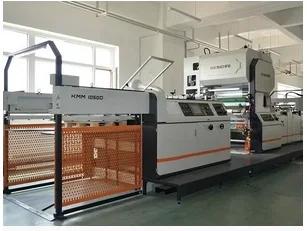In the process of custom Greeting Cards, continuous and half-tone images are adjusted by the density of the dot. By mixing CMYK four-color dots, an infinite number of colors can be displayed. So what are the core factors of the dot in printing?
1. Amplitude modulation network
Amplitude-modulation network is a more widely used network at present. Its dot density is fixed, by adjusting the size of the dot to show the depth of color, so as to achieve the transition of tone. In printing, the use of amplitude modulation network mainly needs to consider the network size, network shape, network Angle, network cable accuracy and other factors.
Second, dot size
The dot size is determined by the coverage rate of the dot, also known as the inking rate. Generally, it is customary to use "into" as a unit of measurement, such as 10% coverage of the network is called "10% of the network", 20% coverage of the network is called "20% of the network", in addition, 0% coverage of the network is called "absolute network", and 100% coverage of the network is called "field".
Three, dot shape
The shape of the dot in printing is not only a circular one that we imagine, but the shape shown by the dot in the case of 50% ink rate can be divided into: square, round, diamond three kinds.
Square dot in 50% coverage, into a checkerboard shape. Its particles are relatively sharp, and the performance ability of the level is very strong. Suitable for line, graphics and some hard tone image performance. Circular dots are independent of each other, both in the light tone and in the middle tone, and only partially connected in the dark tone. Therefore, the performance ability of the mining level is not good, and it is less used in four-color printing.
Fourth, network Angle
In printing and platemaking, the choice of dot Angle plays a crucial role. Selecting the wrong dot Angle will result in interference fringes.
The common dot Angle is 90 degrees, 15 degrees, 45 degrees, 75 degrees. 45 degree network performance is better, stable but not inflexible; 15 degrees and 75 degrees Angle stability is less, but the visual effect is not dull; The 90-degree Angle is relatively stable, but the visual effect is too dull and unaesthetic.
Two or more kinds of nodes are set together, there will be mutual interference, when the interference is serious enough to affect the beauty of the image, there is a commonly known "turtle grain".
The above is a small series for you to introduce some of the core factors of custom Greeting Cards in the network, I hope to help you. For more information about printing, please visit the company website, or call us!
custom Greeting Cards https://www.thpkgg.com/Greeting-Cards.html

